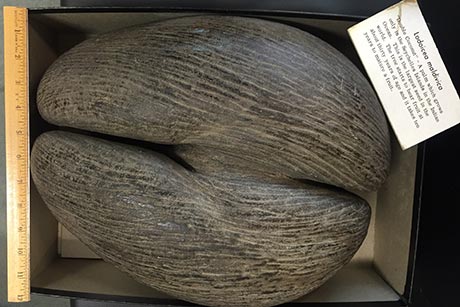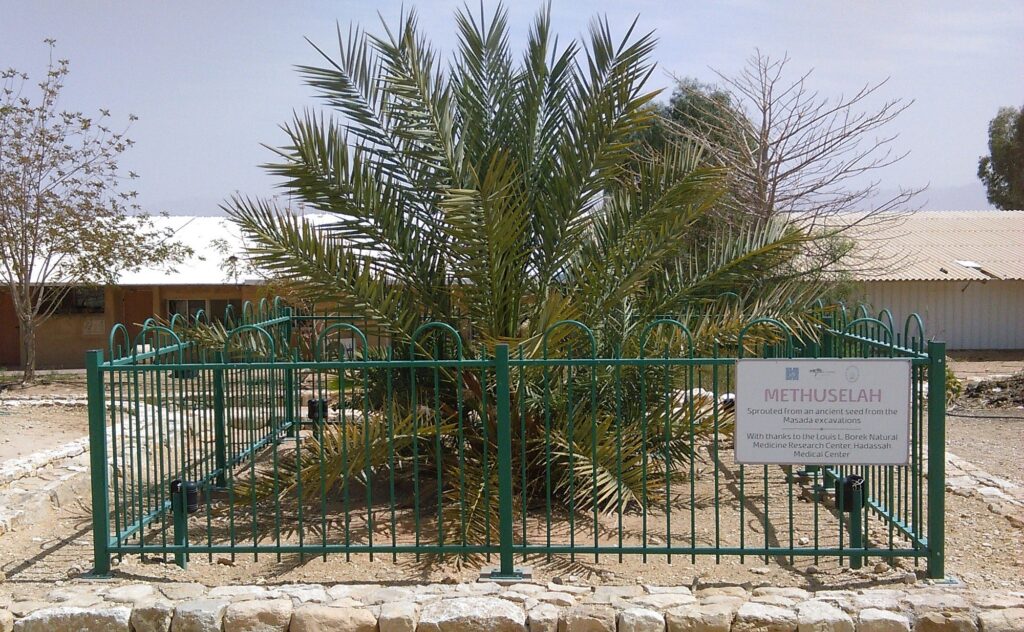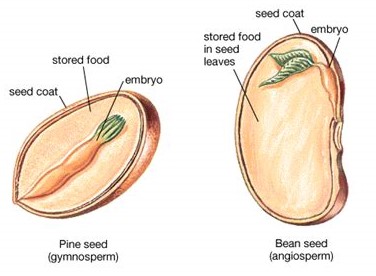Seeds – The Source of Life
- 2023-03-05
- By mkirk
- Posted in Horticulture, The Garden Buzz
By Lynne McKinley, Colorado Master Gardener
It is time to start sorting, classifying and evaluating our seeds. Did you ever stop to think about the amazing abilities of seeds and how they appear in the most unlikely places?

Seeds travel in unique ways. The largest seed in the world, the double coconut palm, travels with the ocean current. The smallest seeds, tropical orchids, are blown through the rain forest air like dust. Some seeds are spiky and stick to the fur of a moving animal. Other seeds are eaten by birds and are eliminated in their droppings miles away.
Seeds stay dormant until the right conditions arise. The oldest seed to germinate and grow into a viable plant is an ancient date palm seed. It was discovered in 1963 during excavations of Herod the Great’s palace in Masada, Israel. It wasn’t planted until 40+ years later. The plant is aptly named, Methuselah, after what biblical scholars believe is the longest living human at 969 years.

Scientists are experimenting with successful seed germination on other planets. A cotton seed sprouted within a container in the Chinese Chang’e-4 lunar lander in 2019, making history as the first germinating seed in another world!
All seeds need air, water and warmth to germinate. Some need light to germinate; some don’t. Many seeds need a period of cold or warm temperatures. Other seeds need intense heat to germinate. Living in Colorado, many of us know that the lodgepole pine trees have cones (seeds) sealed with resin. Only a fire will melt the resin and release the seeds.

Within a seed exists an embryonic plant (roots and leaves) and a starchy food supply. A plant needs energy until it can make its own food through photosynthesis. When the hard seed coat is softened with water and warmth, a root will grow downward (Thank you, gravity!) and a leaf will grow upward. The first leaves are called cotyledons. If there are two leaves, the plant is a dicot. Corns and grasses have only one leaf and are examples of monocots.
You may wonder, like me, if my old seeds will germinate. Did I store them properly? Are they damaged in any other way? Here is a simple test you can perform. Wrap a small number of seeds in a damp paper towel and place in a zip-loc bag in a warm place like the top of a refrigerator. Keep the paper towel moist but not soggy for a period of 5-10 days. Unwrap the paper towel. If more than 80% of the seeds have germinated, you are good to go.
Seeds have differing needs of warmth to germinate. There are cool season plants where seeds sprout in cooler soil temperatures and there are warm season plants where the soil needs to heat up for successful germination. Read the seed packet carefully to know what approximate soil temperatures your seeds need.
Seeds are built for survival. Don’t be surprised if your old package of lettuce seeds is still viable and productive.
Horticulture Resources
- Garden Buzz Archives
- CSU Extension Resources
- Colorado Master Gardener Program
- Foothills to Plains Native Plant Master Program
- Native Bee Watch Community Science Program
- The Co-Hort Blog
- PlantTalk Colorado
- Soil Testing
- Plant Select
- Emerald Ash Borer
- Japanese Beetle
- Colorado State Forest Service
- Ask an Expert


